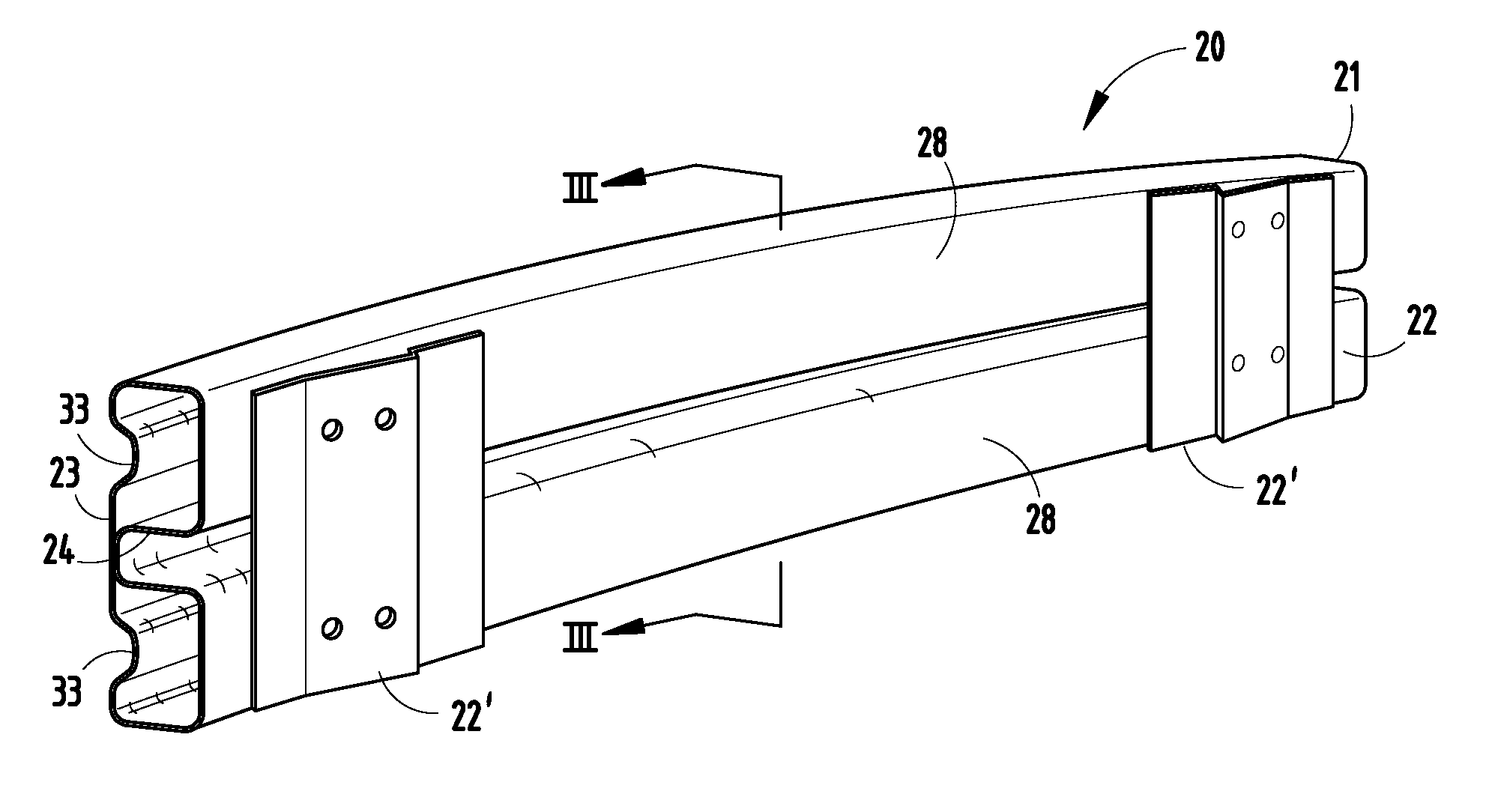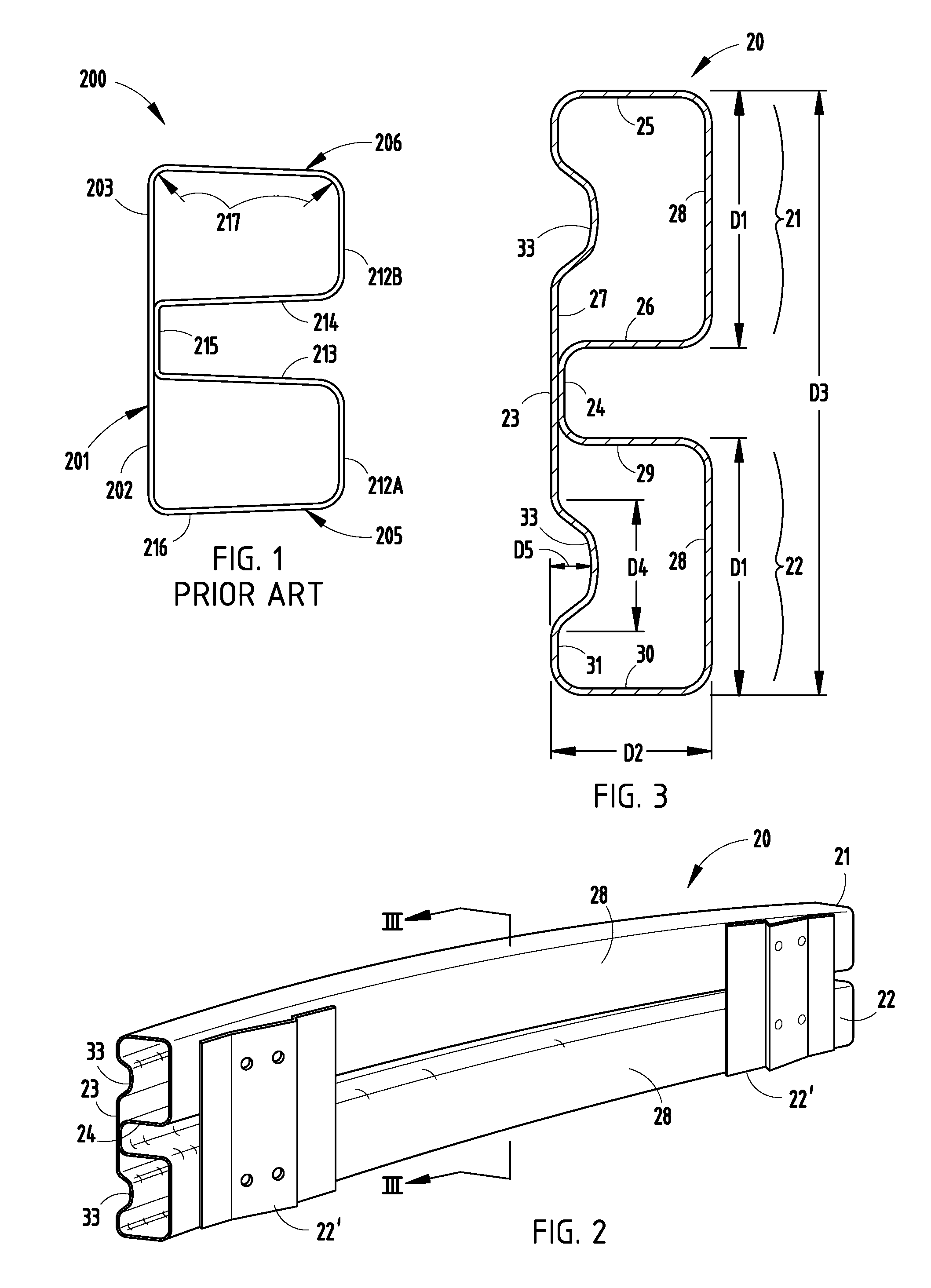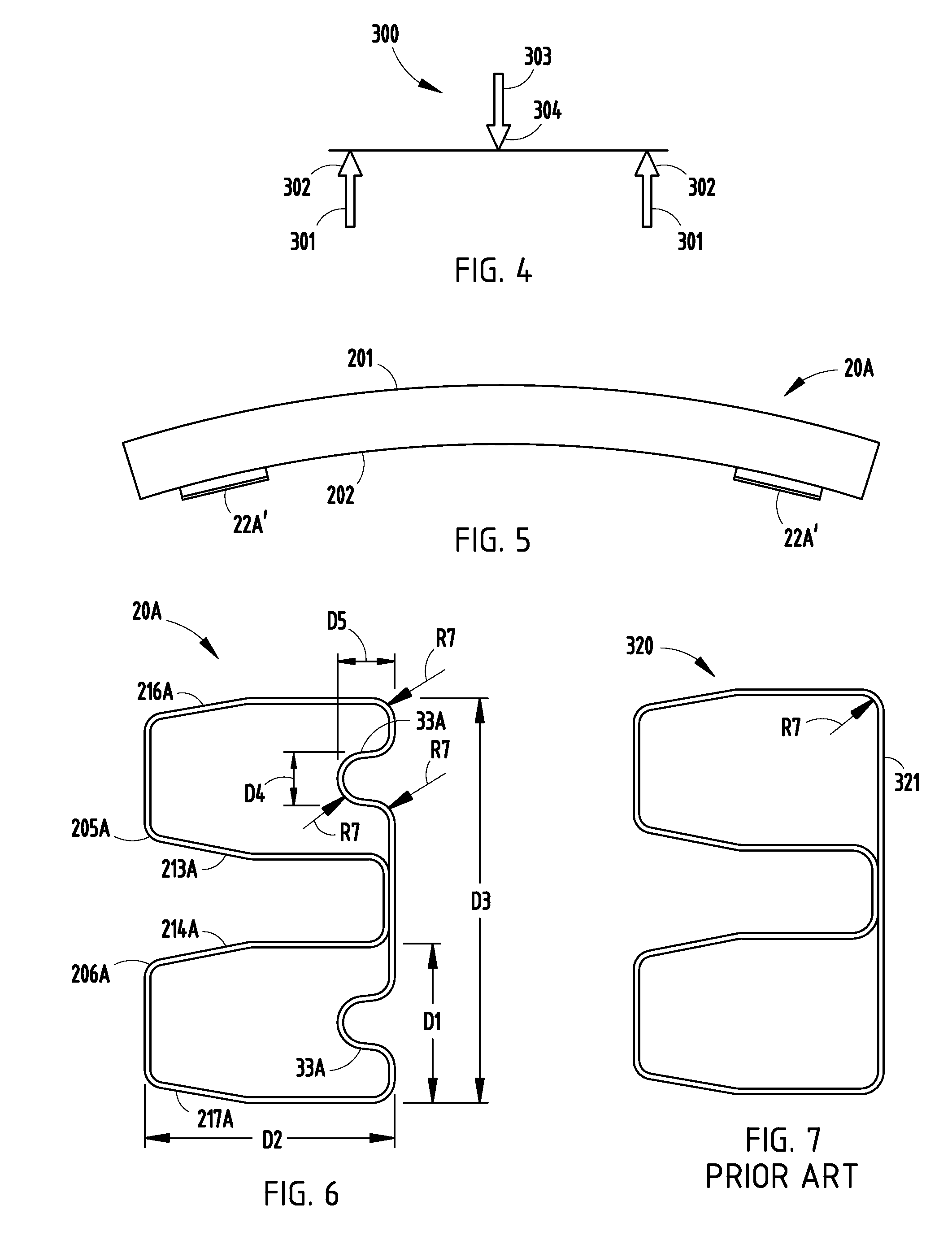B-shaped beam with integrally-formed rib in face
a rib and integral technology, applied in the field of b-shaped beams, can solve the problem that the front wall of the beams is locally unstable during bending impact, and achieve the effect of improving the actual impact strength of the b-shaped beams and improving the actual bending strength
- Summary
- Abstract
- Description
- Claims
- Application Information
AI Technical Summary
Benefits of technology
Problems solved by technology
Method used
Image
Examples
Embodiment Construction
[0036]As will be understood by persons skilled in this art, in a pure bending condition, the theoretical beam maximum bending stress is predicted by the following equation: σ=M / Z, where M is the bending moment and Z is the plastic section modulus. When σmax≦σyield, the beam will theoretically not buckle under bending moment M. Therefore just before beam buckle, Mmax=σyield×Z. Mmax is often referred to as section flexure rigidity. This theoretical value M must be correlated to actual test results (actual Mmax), since actual values vary. For example, as illustrated and discussed hereafter, a ratio of the actual Mmax value to the theoretical Mmax value can be as low as 50% to 60% in a B beam with a cross section having a vertically-linear front wall, such as the prior art B beam shown in Sturrus U.S. Pat. No. 5,395,036 (see FIG. 1 herein and discussion above).
[0037]We have discovered that a ratio of the actual Mmax to the theoretical Mmax value can be raised to about 70% to 80% or high...
PUM
| Property | Measurement | Unit |
|---|---|---|
| thickness | aaaaa | aaaaa |
| thickness | aaaaa | aaaaa |
| depth | aaaaa | aaaaa |
Abstract
Description
Claims
Application Information
 Login to View More
Login to View More - R&D
- Intellectual Property
- Life Sciences
- Materials
- Tech Scout
- Unparalleled Data Quality
- Higher Quality Content
- 60% Fewer Hallucinations
Browse by: Latest US Patents, China's latest patents, Technical Efficacy Thesaurus, Application Domain, Technology Topic, Popular Technical Reports.
© 2025 PatSnap. All rights reserved.Legal|Privacy policy|Modern Slavery Act Transparency Statement|Sitemap|About US| Contact US: help@patsnap.com



